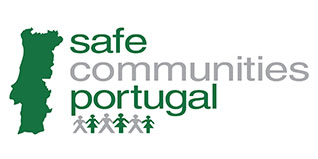The context of the fire risk for this year is “worrying”, with the impact of the covid-19 pandemic adding to the concerns that already existed, according to a note released today by the Technical Observatory Independent of the Assembly of the Republic.
“The context of risk for the current year is worrying”, reads the document, which points to the “situation of pandemic crisis due to covid-19, with a reduction in the general mobility of the population, and with special confinement of risk groups , with measures of physical distance – mistakenly called ‘social’ – and restrictions on the permanence of a large number of people in limited spaces ”.
This new framework will influence the constitution of teams, garrisons, aircraft crews, heli-transported teams and command posts, “which will necessarily lead to the elaboration of a contingency plan”, underlines the entity, adding that the work take place “at a time when knowledge about the evolution of the pandemic in the coming months is uncertain”.
According to the analysis of the device for fighting rural fires in 2020 made by the observatory experts, in addition to the issue of covid-19, “many of the previous concerns remain”, since “beyond the influence of climate change , also the susceptibility of the territory to the occurrence of rural fires has not decreased ”.
The observatory stresses that it has been drawing “attention to the occupation goals by species established by the Regional Forest Management Plans (PROF) for 2030 and 2050 (OTI 2018)” and that “the revision of these goals results from the need to adapt the forest cover to reduce the risk of fire, by reducing the area of the most flammable species such as eucalyptus and maritime pine and the inverse expansion of leafy species such as oaks ”.
The experts consider that the PROF “continue to be the instrument for the redefinition of forests in order to increase their resilience, imposing the definition of a suitable cover and management models and favoring the expansion of less flammable species”.
On the other hand, “the weaknesses regarding planning pieces are maintained, which rests once again on the hazard map, distributing resources and means based on this cartography”, says the observatory, stressing that “it has already drawn attention to the risk that operational planning is based on this mapping ”.
This is because “it classifies as highly dangerous areas recently covered by fire”, he stressed, that is, “this process results in the overestimation of the risk of fire in areas already burnt to the detriment of other areas of the country with greater potential risk”.
Furthermore, according to the observatory, it is also noted that this Special Rural Fire Fighting Device (DECIR) “does not explicitly reflect the concerns expressed in the studies that the Observatory has carried out, both in the strategic positioning for the first intervention, as well as the importance intervention in the night combat, which proved to be very ineffective in the Monchique and Vila de Rei fires analyzed by this Observatory ”.
The organization suggests that “the device could have specialized teams with greater mobility and intervention authority in the most complex operating theatres”.
The observatory also records “some lack of integration of the combat device with the rest of the Integrated Rural Fire Management System, namely in relation to the components of surveillance, detection, defense of the populations or investigation of the causes”.
And he warns that “the little integration of these aspects results from the lack of organization of a true integrated system with territorial coherence and the inexistence of a National Plan for Integrated Management of Rural Fires, an issue to which this Observatory has systematically warned”.
Finally, the experts note that the analysis made focuses only on the description of DECIR, and in particular on the amount of means available to fight fires.
“It is known, however, that the efficiency and effectiveness of combat, particularly in more complex situations, depends strongly on the quality of the intervention”, emphasizes the observatory, concluding that this “requires an increasing emphasis on the training and qualification of agents”
